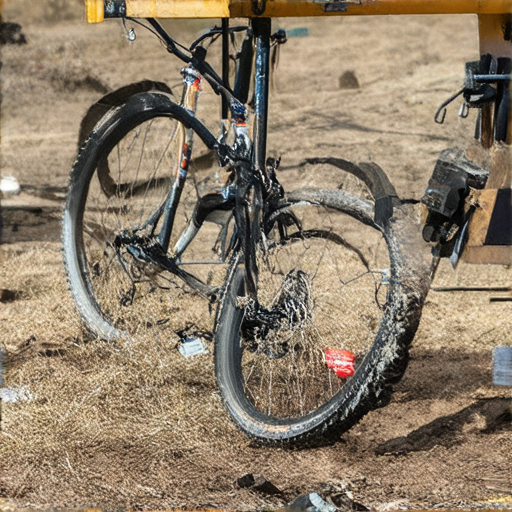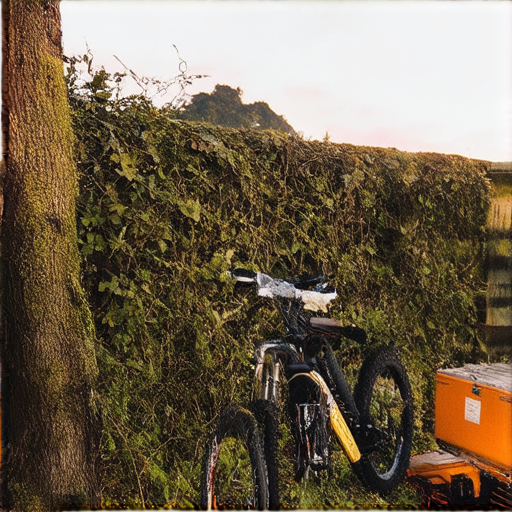As a mountain biker, keeping your ride in top shape is crucial for a fun and safe riding experience. Regular mountain bike maintenance can help extend the life of your bike, improve its performance, and reduce the risk of breakdowns on the trail. With the right tools and knowledge, you can perform routine checks, address issues promptly, and stay ahead of the game. In this comprehensive guide, we’ll cover everything from choosing the right tools for mountain bike maintenance to understanding the importance of regular servicing and troubleshooting common issues.
Whether you’re a seasoned pro or a beginner looking to get started, our expert advice will provide you with the confidence and skills needed to keep your mountain bike running smoothly. We’ll explore topics like the best bike tool sets, essential mtb tools, and the most effective ways to lubricate your chain. Plus, we’ll share valuable insights into creating a personalized maintenance schedule, identifying common mistakes to avoid, and learning to repair and maintain your own bike.
From the basics of bike maintenance to advanced techniques and specialized tools, we’ve got you covered. Our goal is to empower you with the knowledge and expertise needed to take control of your mountain bike’s health and enjoy a lifetime of thrilling rides. So, let’s dive in and discover the secrets to mastering mountain bike maintenance!

**Maintaining Your Mountain Bike**
Regular maintenance is essential to ensure your mountain bike runs smoothly, efficiently, and safely. At Leeds Bicycle, we understand the importance of regular checks and upkeep to extend the life of your bike.
Tire Pressure and Cleaning
Before every ride, check your tire pressure and adjust according to the manufacturer’s recommendations. A well-inflated tire ensures better traction and reduces the risk of punctures. After each ride, wipe down stanchions and frame components with a soft-bristled brush to remove dirt and grime. For thorough cleaning, use a mild soap solution and a soft-bristled brush every 1-2 rides. Dry the tires and frame immediately to prevent water spots and corrosion.
Chain Maintenance
Clean and lube the chain every 1-2 rides, depending on usage and conditions. Use a chain cleaner and lube specifically designed for mountain bikes. Apply a small amount of lube to the chain links and wipe off excess with a rag. Consider replacing the chain every 500-1000 miles or when showing signs of wear. Visit our website at Leeds Bicycle for more information on chain maintenance and replacement.
Frame and Component Cleaning
Wash the entire bike every 3-4 rides using a mild soap solution and a soft-bristled brush. Rinse thoroughly and dry with a microfiber cloth to prevent water spots. Regularly inspect and clean the seatpost, stem, and handlebars to prevent corrosion. For detailed cleaning guides, refer to Zinn & the Art of Mountain Bike Maintenance.
Sealant and Air Can Service
Check sealant levels every 3 months and refill as needed. Inspect the air can every 6-12 months and replace if necessary. Follow the manufacturer’s instructions for recharging and maintaining the air can. Learn more about air can maintenance at Leeds Bicycle.
Creak and Wear Prevention
Regularly inspect the bike for signs of wear and tear, such as creaky joints and loose bolts. Tighten loose bolts and adjust the derailleurs and brakes as needed. Consider applying lubricants to moving parts to reduce friction and wear. Refer to our blog for expert advice on preventing creaks and wear.
Seasonal Maintenance
Perform a thorough inspection and cleaning of the bike every spring and fall. Check and replace worn-out components, such as tires and chains. Store the bike in a dry, secure location during extreme weather conditions. For seasonal maintenance schedules, visit Leeds Bicycle.
**Caring for Your Mountain Bike**
To keep your mountain bike running smoothly and prolong its lifespan, follow these essential maintenance tips:
**Regular Cleaning**
Wash your bike with mild soap and water after each ride to remove dirt, grime, and debris. Use a soft-bristled brush to clean hard-to-reach areas, such as the chainrings and derailleurs. Learn more about bike maintenance tips. Dry your bike thoroughly after cleaning to prevent rust and corrosion.
**Chain Maintenance**
Check your chain regularly for wear and tear, and lubricate it according to the manufacturer’s instructions. Clean the chain frequently to prevent dirt buildup and maintain smooth pedaling. Consider replacing your chain every 300-500 miles or when showing signs of wear. Visit our bike tool kit selection for the best options.
**Tire Pressure and Tread**
Check tire pressure monthly and before long rides to ensure optimal inflation. Maintain a minimum of 20-30 PSI for front tires and 15-25 PSI for rear tires. Inspect tire tread depth regularly and replace tires when worn down to 1/16 inch or less. For expert advice, check out Zinn and the Art of Mountain Bike Maintenance.
**Brake Pads and Bleeding**
Check brake pads regularly and replace them when worn down to 1/8 inch or less. Bleed your brakes annually or whenever you notice a decrease in braking performance. Use a hydraulic brake fluid compatible with your bike’s system. Refer to our bike repair classes for personalized guidance.
**Gear Shifting and Derailleur Adjustment**
Adjust your derailleur regularly to ensure proper shifting and prevent damage. Lubricate your gears and bearings according to the manufacturer’s instructions. Consult your owner’s manual for specific gear shifting and adjustment procedures. Our expert mechanics are happy to assist with any adjustments.
**Wheel Truing and Spokes**
Check your wheels regularly for trueness and tighten spokes as needed. Use a wheel truing tool to ensure proper alignment and balance. Replace wheels if they show signs of excessive wear or damage. For professional wheel truing services, visit our wheel truing services.
**Suspension and Fork Maintenance**
Check your suspension regularly for proper function and adjust as needed. Lubricate your fork and suspension components according to the manufacturer’s instructions. Consult your owner’s manual for specific maintenance procedures. Our suspension experts are here to help with any issues.
**Storage and Transportation**
Store your bike in a dry, secure location away from direct sunlight. Transport your bike using a sturdy rack or trailer to prevent damage. Always lock your bike securely when parked outdoors. Learn more about bike storage and transportation tips on our bike storage tips page.
Mountain Bike Maintenance Frequency
Regular maintenance is essential to ensure your mountain bike runs smoothly, efficiently, and safely. Understanding how often to perform maintenance tasks can help prevent costly repairs, extend the lifespan of your bike, and enhance overall performance.
Factors Influencing Maintenance Frequency
- Leeds Bicycle recommends considering the following factors when determining the ideal maintenance schedule for your mountain bike:
- 1. Riding Frequency: If you ride your mountain bike frequently, you may need to perform maintenance more often than someone who rides less frequently.
- 2. Terrain and Conditions: Riding on technical trails, carrying heavy loads, or navigating extreme weather conditions can increase wear and tear on your bike, requiring more frequent maintenance.
- 3. Bike Type and Model: Different types of mountain bikes, such as cross-country or downhill bikes, have varying requirements for maintenance due to differences in design and components.
- 4. Personal Riding Style: Aggressive riders or those who push their bikes to their limits may require more frequent maintenance to maintain optimal performance.
Recommended Maintenance Schedule
While there is no one-size-fits-all answer to how often to perform maintenance on your mountain bike, here are some general guidelines:
* Basic Maintenance: Perform routine checks and adjustments every 1-3 months, including:
- Tire pressure and tread inspection
- Brake pad replacement
- Chain lubrication and cleaning
- Quick releases and bolts tightening
* Intermediate Maintenance: Every 3-6 months, consider:
- Cleaning and lubricating the drivetrain
- Adjusting derailleurs and brakes
- Inspecting and replacing worn-out components (e.g., bearings, pivots)
* Full Tune-Up: Every 6-12 months, schedule a professional tune-up to inspect and replace critical components, such as:
- Gears and chainrings
- Cranks and pedals
- Wheels and hubs
Additional Tips
Keep a maintenance log to track your progress and identify potential issues before they become major problems.
Consult your bike’s owner’s manual or manufacturer recommendations for specific maintenance schedules.
Consider taking a bike maintenance course or seeking guidance from a local bike shop to learn more about proper maintenance techniques.

Advanced Techniques for Mountain Bike Maintenance
How to Perform a Thorough Mountain Bike Inspection
Performing a thorough mountain bike inspection is crucial to identifying potential issues before they become major problems. This involves checking the bike’s tire pressure, brakes, gears, and suspension, as well as inspecting the frame, fork, and wheels for any signs of damage or wear.
At Leeds Bicycle, we recommend performing a weekly inspection to catch any issues early on. For a more detailed inspection, refer to our mountain bike maintenance schedule. Our expert mechanics also offer bike repair classes to teach you how to perform a thorough inspection yourself.
What Are Some Common Mistakes to Avoid During Mountain Bike Maintenance?
Common mistakes to avoid during mountain bike maintenance include over-tightening bolts, using the wrong type of lubricant, and neglecting to check tire pressure. These mistakes can lead to premature wear, damage to components, and even accidents.
To avoid these mistakes, it’s essential to follow the manufacturer’s instructions and take the time to research and understand the specific needs of your bike. Our team at Leeds Bicycle is happy to provide guidance and support to help you maintain your mountain bike correctly.
How to Troubleshoot Common Mountain Bike Issues
Troubleshooting common mountain bike issues requires patience, attention to detail, and a basic understanding of bike mechanics. By using diagnostic tools and following a systematic approach, you can quickly identify and fix problems, saving you time and money.
For more information on troubleshooting common mountain bike issues, visit our mountain bike troubleshooting guide. Our experts also offer bike repair training courses to teach you how to diagnose and fix common issues.
Learn more about our MTB Work Stand
Spraying WD-40 on Bike Chain: A Comprehensive Guide
When it comes to cleaning and lubricating a bike chain, many cyclists turn to WD-40 as a quick fix. However, spraying WD-40 on a bike chain can pose several risks, including damage to certain materials and the potential for leaving behind residues that attract dirt and dust.
Understanding the Risks
Leeds Bicycle emphasizes the importance of understanding the potential risks involved in using WD-40 on a bike chain. The solvents present in WD-40 can damage materials such as rubber and plastic components, which are commonly found in modern bike designs.
Chain Material Compatibility
Not all bike chains are created equal, and some materials may react poorly to WD-40. For instance, chains made from stainless steel or titanium may be damaged by the solvent properties of WD-40. Before using WD-40, it’s essential to check your chain’s material to ensure compatibility.
Cleaning and Degreasing
While WD-40 can effectively clean and degrease a bike chain, it’s crucial to rinse the chain thoroughly with soap and water to remove any remaining residue. This step ensures that the chain remains free from contaminants and maintains optimal lubrication.
Lubrication Requirements
After cleaning and rinsing the chain, apply a high-quality lubricant specifically designed for bicycle chains. These lubricants help maintain the chain’s smooth operation, reduce wear, and prevent corrosion.
Best Practices
To avoid damaging your bike chain when using WD-40, follow these best practices:
- Spray WD-40 onto a rag or cloth, rather than directly onto the chain.
- Wipe down the chain gently, working from one end to the other.
- Rinse the chain thoroughly with soap and water after cleaning.
- Apply a lubricant immediately after cleaning to prevent drying out the chain.
Alternatives to WD-40
If you’re concerned about the potential risks associated with WD-40, consider alternative cleaning products specifically designed for bicycles. These products are typically safer and more effective for maintaining your chain’s health.
Maintenance Schedule
Regular maintenance is essential for extending the life of your bike chain. Aim to clean and lube your chain every 100-200 miles, depending on usage and environmental conditions.
Additional Tips
Always refer to your bike’s manufacturer instructions for recommended cleaning and lubrication procedures. Consider using a chain cleaner tool to remove grime and debris from hard-to-reach areas. Keeping your bike’s chain well-maintained ensures smooth pedaling and prevents costly repairs.

Lubricating Your Mountain Bike: A Comprehensive Guide
When it comes to maintaining your mountain bike, one crucial aspect is keeping the chain well-lubricated. Proper lubrication ensures smooth pedaling, reduces wear and tear on the chain, and prevents damage to other components.
Choosing the Right Lubricant
Select a high-quality chain lube specifically designed for mountain biking. Look for products containing synthetic oils or waxes, which provide excellent protection against corrosion and wear. Some popular options include:
- Squirt Long Lasting Dry Lube
- Finish Line Professional Pro-Clean & Lube
- Park Tool Chain Lube
Squirt Long Lasting Dry Lube is a popular choice among mountain bikers due to its long-lasting formula and ease of application.
Cleaning the Chain Before Application
Dirt, grime, and old lubricant can interfere with the new lube’s effectiveness. Use a degreaser or a chain cleaner to remove any residue before applying the new lube.
At Leeds Bicycle, we recommend using a degreaser like our bike maintenance tools to clean the chain before application.
Applying the Lubricant
Follow these steps to apply the lube effectively:
- Hold the chain in place with one hand, and with the other hand, pump the pedals backward several times to move the chain through its full range of motion.
- Apply a small amount of lube to the chain, focusing on the lower run of links. You can use a brush or your fingers to apply the lube evenly.
- Work your way up the chain, making sure to cover all the links thoroughly.
- Repeat the process several times to ensure the lube is evenly distributed throughout the chain.
For a detailed guide on lubricating your mountain bike, check out our mountain bike maintenance schedule.
Wiping Off Excess Lubricant
After applying the lube, wipe off any excess with a rag or paper towel to prevent drips and stains on your bike’s frame and components.
Checking and Reapplying as Needed
Regularly check the chain’s condition and reapply lubricant as needed. A general rule of thumb is to reapply lubricant every 100-200 miles or after riding in wet conditions.
Refer to your bike’s manufacturer instructions for specific recommendations on lubrication and maintenance.

0 Comments